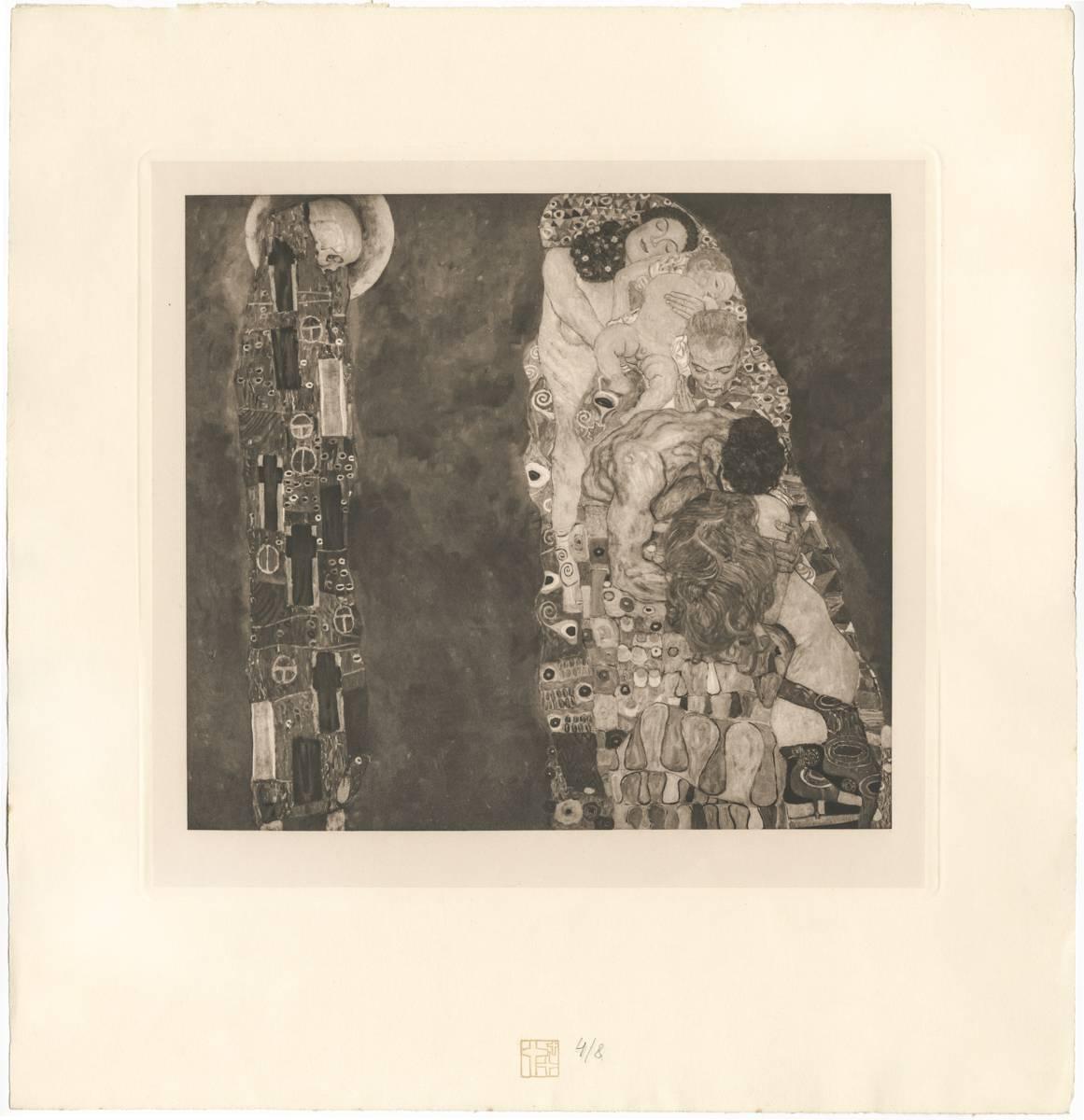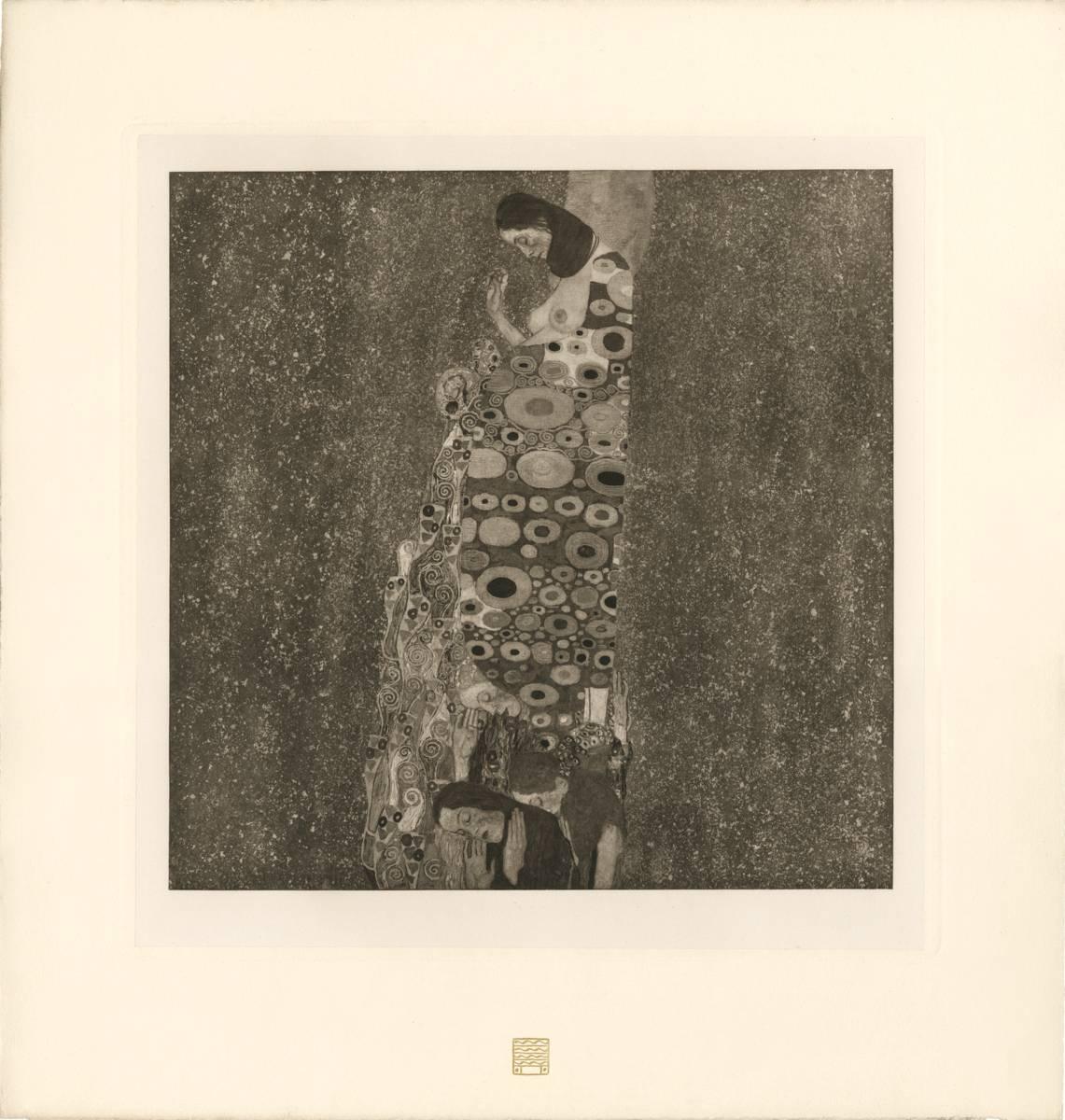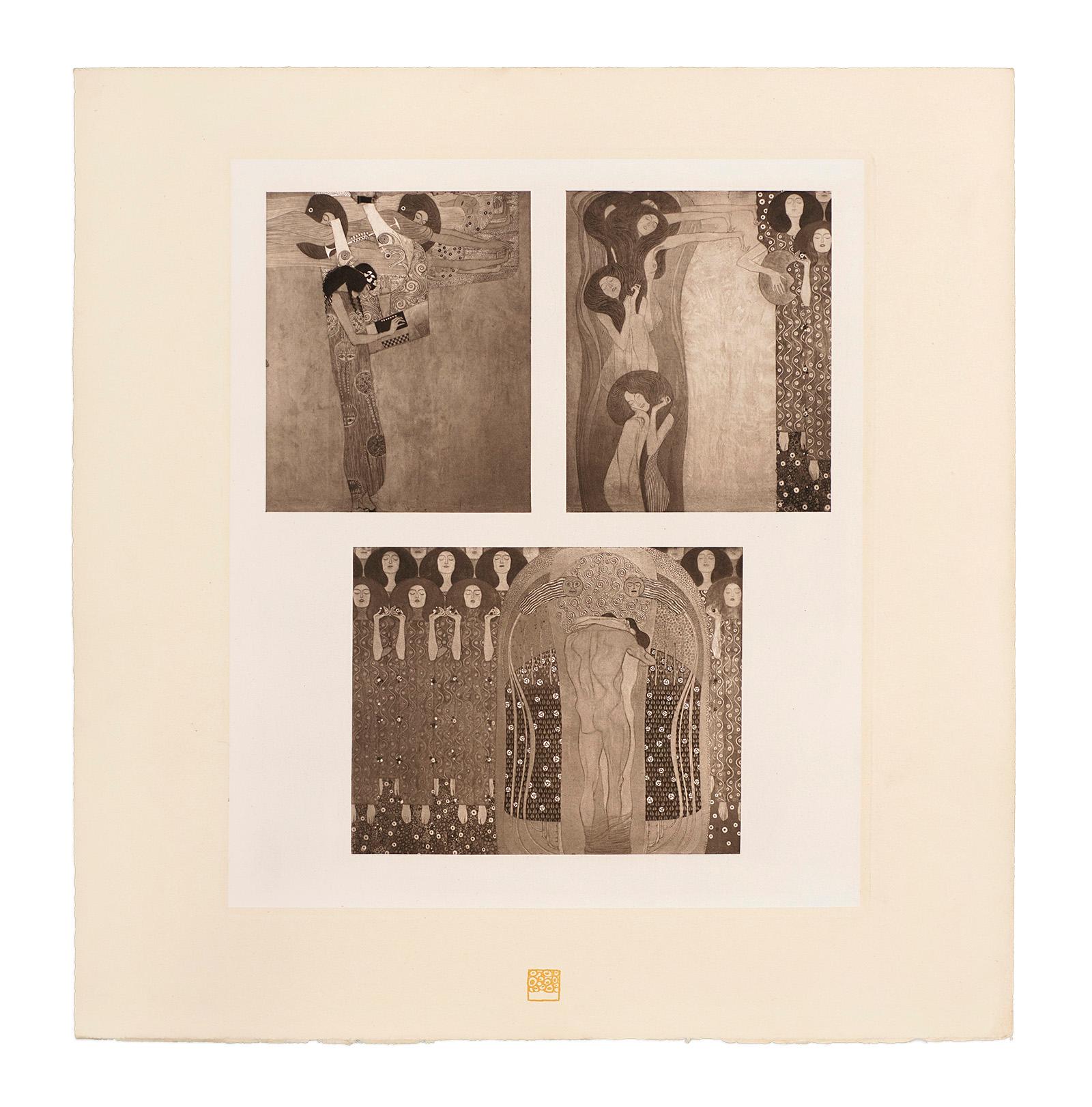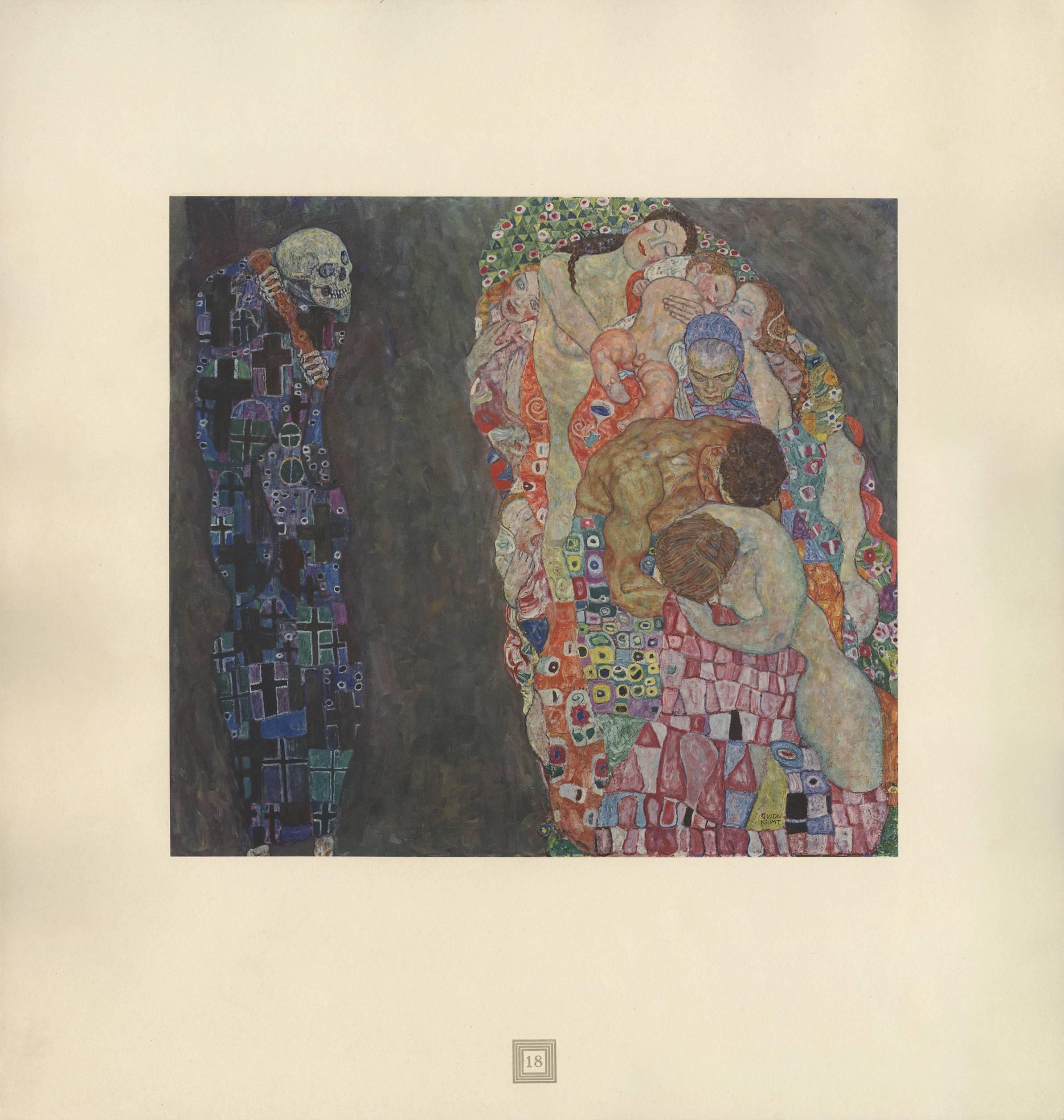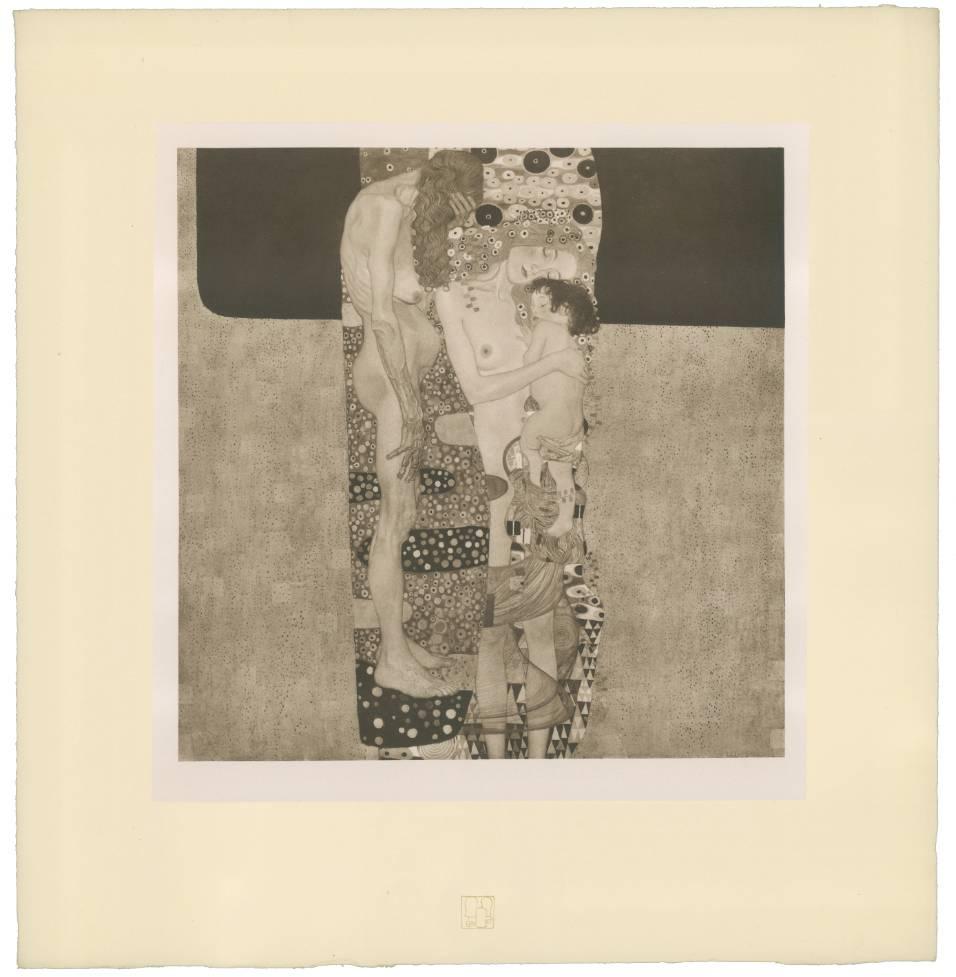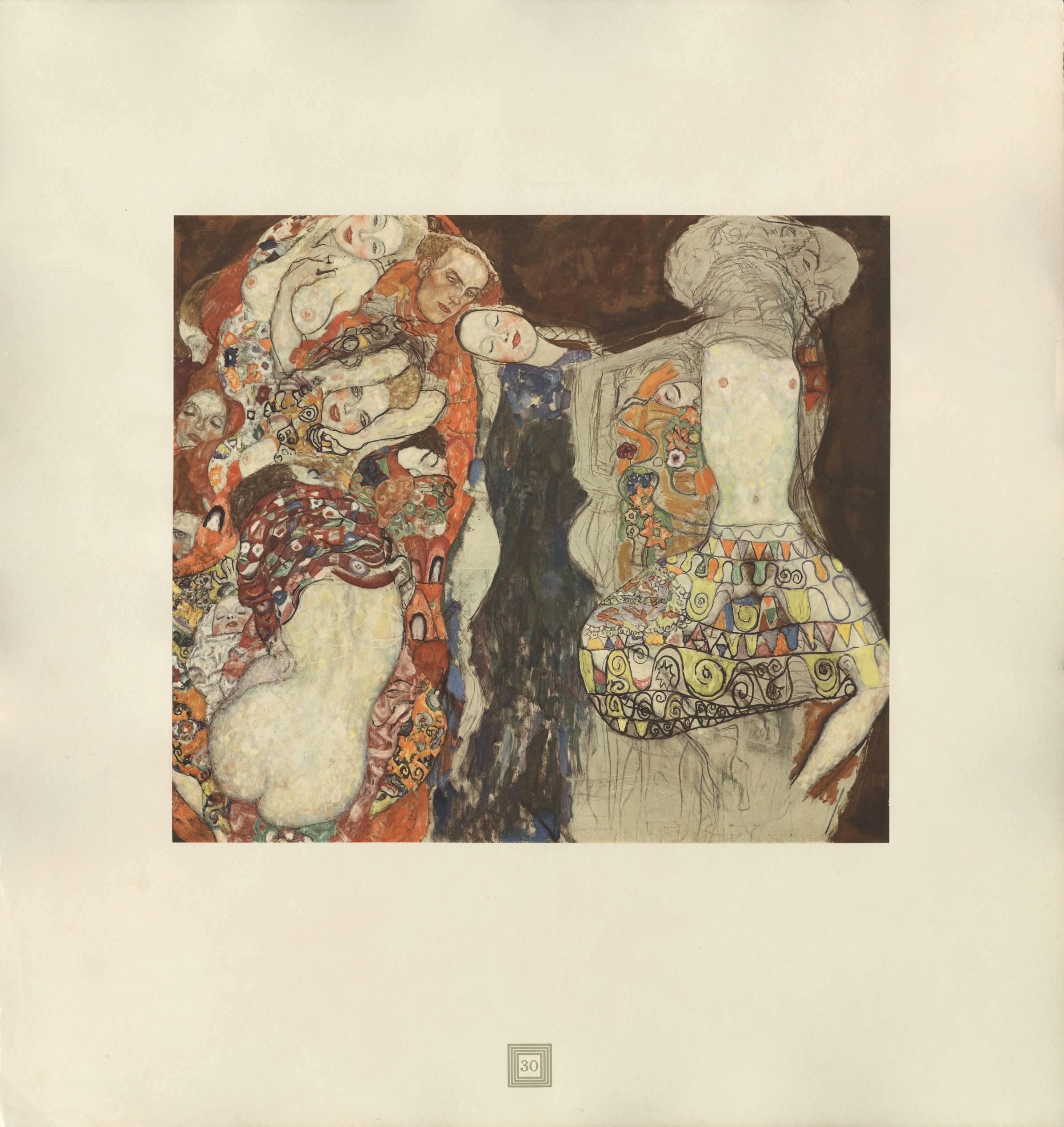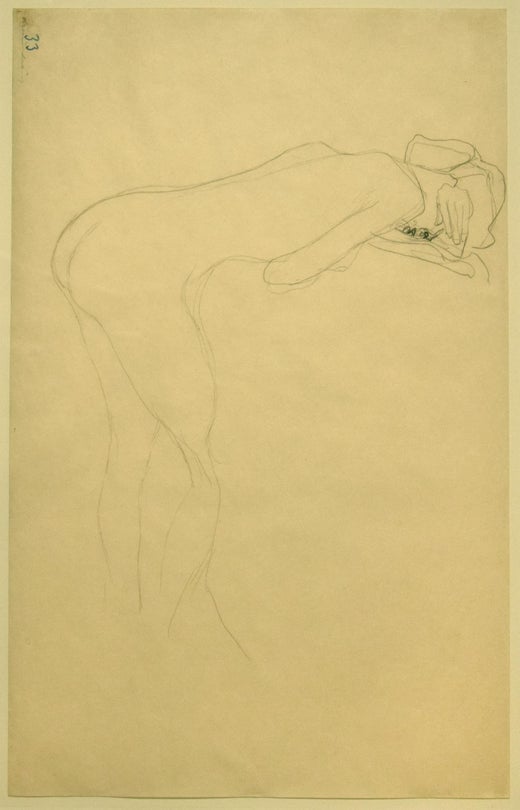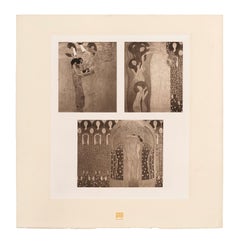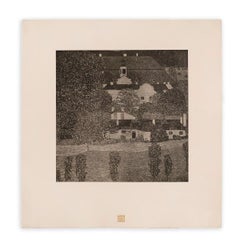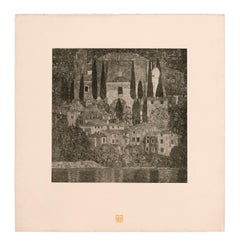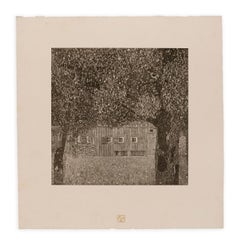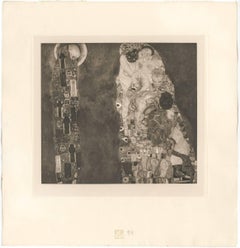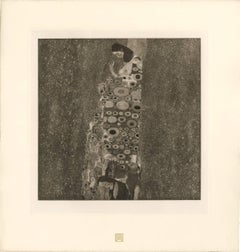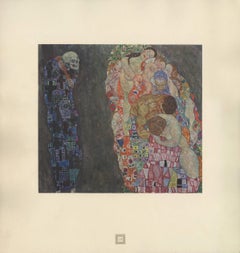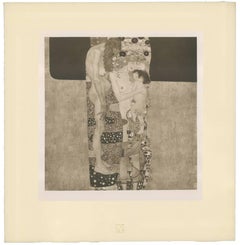Items Similar to Death and Life by Gustav Klimt, Das Werk lifetime collotype, 1908-1912
Want more images or videos?
Request additional images or videos from the seller
1 of 6
Gustav KlimtDeath and Life by Gustav Klimt, Das Werk lifetime collotype, 1908-19121908-1914
1908-1914
$7,800
£5,919.18
€6,777.96
CA$11,084.34
A$12,063.96
CHF 6,333.47
MX$145,750.26
NOK 79,492.06
SEK 74,951.61
DKK 50,596.83
About the Item
Original collotype created from Gustav Klimt’s Death and Life, painted in 1908. Published and edited by Verlag H.O. Miethke and printed by k.k. Hof- und Staatsdruckerei, Vienna, in an edition of 300. Collotype on chine colle paper laid down on heavy deckled-edge cream-wove paper.
Between 1908 and 1914, H.O. Miethke published Das Werk Gustav Klimts, a folio of collotypes representing Gustav Klimt’s most notable works leading up to 1913. Klimt’s original oil paintings were painstakingly reproduced as collotypes on a handmade, deckled-edge cream wove paper using a complex gravure process overseen by master technicians as well as the artist himself. Each image presented in the folio was assigned its own unique signet, which was designed by Klimt and struck below the image using a technique similar to letterpress. The signet corresponded to a matching signet in the justification page which detailed the piece’s size, location, and owner.
Published under the artist’s direct supervision, this series allowed Klimt, who had completely divorced himself from public commissions following the outcry from his University of Vienna paintings, to more effectively present his artworks to institutions and patrons across the world. A testament to the masterful design and printmaking demonstrated by Das Werk Gustav Klimts, Emperor Franz Joseph himself purchased the first copy of the folio.
Klimt’s Death and Life is an extraordinary example of the collotype process, capturing the superb resolution of the original 1908 oil painting.
Century Guild has curated collections of Gustav Klimt’s printed works on paper for over twenty years, and this artwork arrives accompanied by a certificate of authenticity. Please contact us directly if you’d like to learn more about this artwork.
- Creator:Gustav Klimt (1862 - 1918, Austrian)
- Creation Year:1908-1914
- Dimensions:Height: 18 in (45.72 cm)Width: 18.5 in (46.99 cm)Depth: 0.1 in (2.54 mm)
- Medium:
- Movement & Style:
- Period:
- Condition:Exceptional condition commensurate with age. Image is pristine and will display beautifully.
- Gallery Location:Chicago, IL
- Reference Number:Seller: KB_0011stDibs: LU1493210779302
Gustav Klimt
Gustav Klimt was an Austrian symbolist painter and a prominent member of the Vienna Secession movement. Klimt's primary subject was the female body and his works are mostly erotic in nature.
About the Seller
5.0
Vetted Professional Seller
Every seller passes strict standards for authenticity and reliability
Established in 1999
1stDibs seller since 2021
40 sales on 1stDibs
- ShippingRetrieving quote...Shipping from: Chicago, IL
- Return Policy
Authenticity Guarantee
In the unlikely event there’s an issue with an item’s authenticity, contact us within 1 year for a full refund. DetailsMoney-Back Guarantee
If your item is not as described, is damaged in transit, or does not arrive, contact us within 7 days for a full refund. Details24-Hour Cancellation
You have a 24-hour grace period in which to reconsider your purchase, with no questions asked.Vetted Professional Sellers
Our world-class sellers must adhere to strict standards for service and quality, maintaining the integrity of our listings.Price-Match Guarantee
If you find that a seller listed the same item for a lower price elsewhere, we’ll match it.Trusted Global Delivery
Our best-in-class carrier network provides specialized shipping options worldwide, including custom delivery.More From This Seller
View AllBeethoven Frieze (detail) by Gustav Klimt, Das Werk collotype, 1908-1912
By Gustav Klimt
Located in Chicago, IL
Original collotype created from a detail of Gustav Klimt’s Beethoven Frieze. Published and edited by Verlag H.O. Miethke and printed by k.k. Hof- und Staatsdruckerei, Vienna, in an e...
Category
Early 1900s Vienna Secession Prints and Multiples
Materials
Paper
Schloss Kammer Lake Attersee II by Gustav Klimt, Das Werk collotype, 1908-1912
By Gustav Klimt
Located in Chicago, IL
Original collotype created from Gustav Klimt’s Schloss Kammer on Lake Attersee II (Das Werk Gustav Klimts), originally painted in 1909. Publishe...
Category
Early 1900s Vienna Secession Prints and Multiples
Materials
Paper
Church in Cassone by Gustav Klimt, Das Werk lifetime collotype, 1908-1912
By Gustav Klimt
Located in Chicago, IL
Original collotype created from Gustav Klimt’s Church in Cassone, painted in 1913. Published and edited by Verlag H.O. Miethke and printed by k.k. Hof- und Staatsdruckerei, Vienna, in an edition of 300.
Between 1908 and 1914, H.O. Miethke published Das Werk Gustav Klimts...
Category
Early 1900s Vienna Secession Prints and Multiples
Materials
Paper
Farmhouse in Buchberg by Gustav Klimt, Das Werk lifetime collotype, 1908-1912
By Gustav Klimt
Located in Chicago, IL
Original collotype created from Gustav Klimt’s Farmhouse in Buchberg (Upper Austrian Farmhouse), painted in 1911. Published and edited by Verlag H.O. Miethke and printed by k.k. Hof- und Staatsdruckerei, Vienna, in an edition of 300.
Between 1908 and 1914, H.O. Miethke published Das Werk Gustav Klimts...
Category
Early 1900s Vienna Secession Prints and Multiples
Materials
Paper
Farm Garden Sunflowers by Gustav Klimt, Das Werk lifetime collotype, 1908-1912
By Gustav Klimt
Located in Chicago, IL
Original collotype created from Gustav Klimt’s Farm Garden With Sunflowers, painted in 1913. Published and edited by Verlag H.O. Miethke and printed by k.k. Hof- und Staatsdruckerei, Vienna, in an edition of 300.
Between 1908 and 1914, H.O. Miethke published Das Werk Gustav Klimts...
Category
Early 1900s Vienna Secession Prints and Multiples
Materials
Paper
Portrait of Lady in Red and Black by Gustav Klimt, Das Werk collotype, 1908-1912
By Gustav Klimt
Located in Chicago, IL
Original collotype created from Gustav Klimt’s Portrait of Lady in Red and Black. Published and edited by Verlag H.O. Miethke and printed by k.k. Hof- und Staatsdruckerei, Vienna, in an edition of 300. Collotype on chine colle paper laid down on heavy deckled-edge cream-wove paper.
Between 1908 and 1914, H.O. Miethke published Das Werk Gustav Klimts...
Category
Early 1900s Vienna Secession Prints and Multiples
Materials
Paper
You May Also Like
H.O. Miethke Das Werk folio "Death and Life" collotype print
By Gustav Klimt & K.K. Hof-und Staatsdruckerei
Located in Chicago, IL
DAS WERK GUSTAV KLIMTS, a portfolio of 50 prints, ten of which are multicolor collotypes on chine colle paper laid down on hand-made heavy cream wove paper with deckled edges; under ...
Category
Early 1900s Vienna Secession Figurative Prints
Materials
Paper
H.O. Miethke Das Werk folio "The Hope II" collotype print
By Gustav Klimt & K.K. Hof-und Staatsdruckerei
Located in Chicago, IL
DAS WERK GUSTAV KLIMTS, a portfolio of 50 prints, ten of which are multicolor collotypes on chine colle paper laid down on hand-made heavy cream wove paper with deckled edges; under ...
Category
Early 1900s Vienna Secession Figurative Prints
Materials
Paper
Max Eisler Eine Nachlese folio “Allegory of Life and Death” collotype print
By (after) Gustav Klimt
Located in Chicago, IL
After Gustav Klimt, Max Eisler #18, Der Tod und das Leben; multi-color collotype after original painting (1910-1916) in oil on canvas.
GUSTAV KLIMT EINE NACHLESE (GUSTAV KLIMT AN AF...
Category
1930s Vienna Secession Figurative Prints
Materials
Paper
H.O. Miethke Das Werk folio "The Three Ages of Woman" collotype print
By Gustav Klimt & K.K. Hof-und Staatsdruckerei
Located in Chicago, IL
DAS WERK GUSTAV KLIMTS, a portfolio of 50 prints, ten of which are multicolor collotypes on chine colle paper laid down on hand-made heavy cream wove paper with deckled edges; under ...
Category
Early 1900s Vienna Secession Figurative Prints
Materials
Paper
Max Eisler Eine Nachlese folio “The Bride” collotype print
By (after) Gustav Klimt
Located in Chicago, IL
After Gustav Klimt, Max Eisler #30, Brautzug; multi-color collotype after unfinished 1917/18 painting in oil on canvas.
Painted in the last months of Klimt’s life, The Bride was one...
Category
1930s Vienna Secession Figurative Prints
Materials
Paper
Gerlach's Allegorien, plate #46: "Love" Lithograph, Gustav Klimt.
By Gustav Klimt
Located in Chicago, IL
Klimt’s association with Martin Gerlach dates back to the early 1880s when Gerlach and Schenk published their first edition of Allegorien und Embleme. By the mid-1890s, they were pla...
Category
1890s Vienna Secession Figurative Prints
Materials
Lithograph
